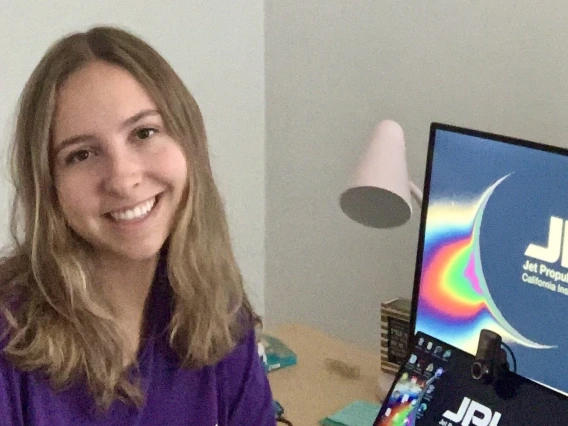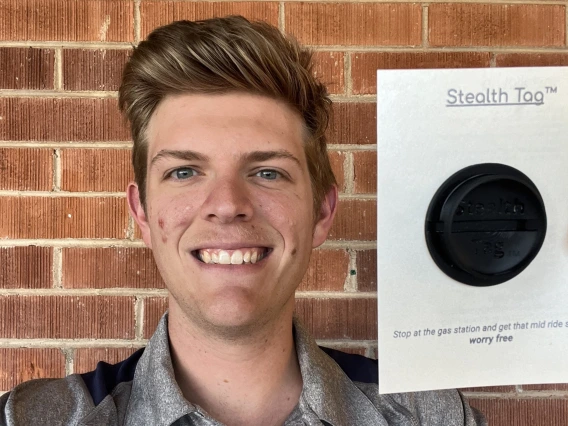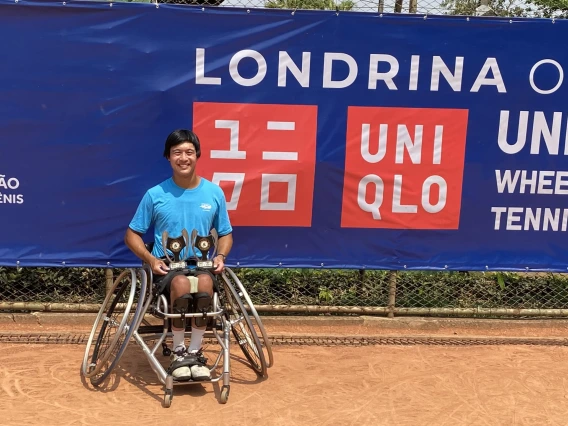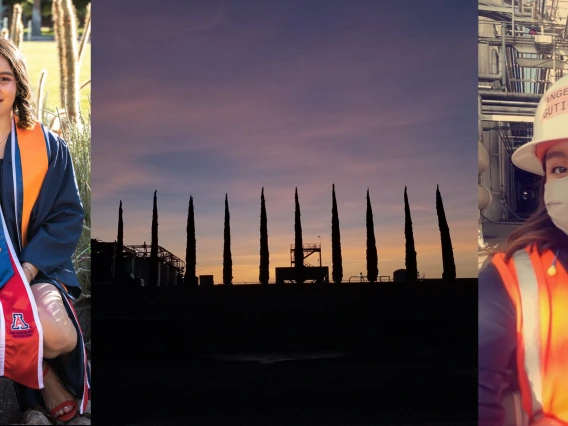Spending the Summer as a NASA Intern: A Q&A With Avery Stockdale-Stephens
Aerospace and mechanical engineering student keeps busy with prestigious research position between finishing her bachelor’s degree and beginning her PhD.
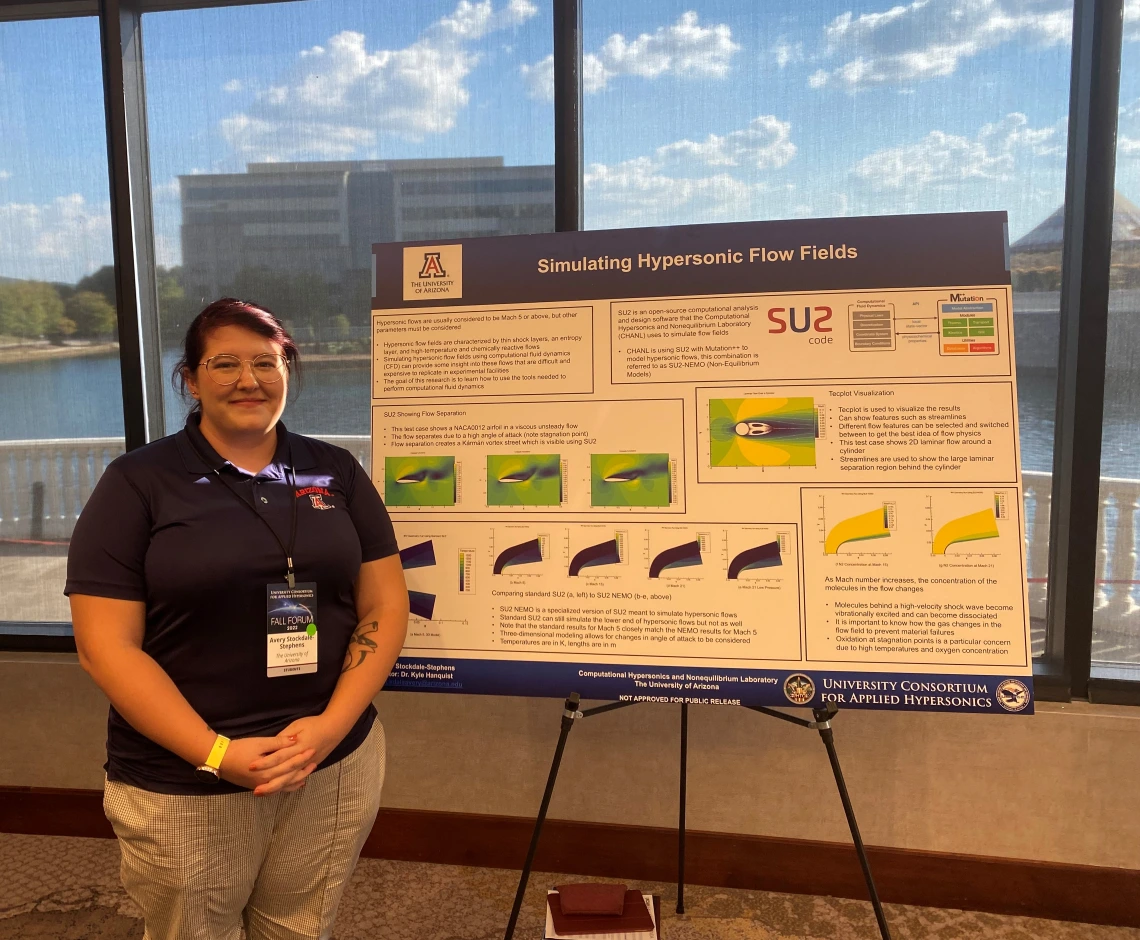
Avery Stockdale-Stephens is interning at NASA Ames in summer 2023, before returning to the University of Arizona for her doctorate degree in aerospace engineering.
Avery Stockdale-Stephens is no stranger to working with NASA. After conducting research for a NASA-funded project in the university’s ASTEROIDS Laboratory and then working as an Arizona Space Grant intern, the aerospace and mechanical engineering student is now interning at NASA Ames Research Center in California’s Silicon Valley.
Stockdale-Stephens decided to look into research opportunities as an undergraduate so she could get a head start on her accelerated master’s program thesis. She spent summer 2022 conducting research in the Computational Hypersonics and Nonequilibrium Laboratory (CHANL), run by assistant professor Kyle Hanquist. She enjoyed the experience so much she decided to stay on for a PhD instead, beginning in fall 2023.
Stockdale-Stephens is also a member of the Society of Women Engineers and has worked with the University Consortium for Applied Hypersonics on constructing a high-fidelity aerodynamic database. Additionally, she has worked as an engineering intern for HFE International and as a manufacturing technician at Sargent Aerospace & Defense. We caught up with her to ask her about her experience as a UA engineering student and NASA intern.
What made you choose to study aerospace engineering at the University of Arizona?
I have always been really interested in space exploration for as long as I can remember. I was originally planning on studying astronomy, but after a semester, I decided that astronomy was too hands-off for me. I settled on aerospace engineering after doing some research into potential career opportunities and looking at the coursework. I’m a Tucson native, and the University of Arizona has a good engineering program, so it seemed like the obvious choice for me.
What projects did you work on in the ASTEROIDS Lab and as part of the Space Grant program?
In the ASTEROIDS Lab, I was on a team of four undergrads led by a master’s student. We were investigating the viability of using off-the-shelf electrolyzers as part of a propulsion system for CubeSats. For this project, I spent a lot of time in a chemical engineering lab running experiments under a fume hood and gained a lot of experience with hardware. Our group also presented our research at the Interplanetary Small Satellite Conference in May 2022.
The Space Grant project was about modeling and simulating the NASA Stardust re-entry capsule using computational fluid dynamics to investigate the wake behind the capsule. The wake behind blunt bodies like re-entry capsules is usually very chaotic and difficult to model and predict, so it’s a great research topic. Rather than working with hardware in a lab, I spent most of my time in the CHANL shared office space working on my computer.
What about at your internship this summer?
I’m working on a project called Stratospheric Projectile Experiment of Entry Dynamics (SPEED). The basic idea is to drop a scaled-down 3D printed re-entry capsule from a high-altitude balloon to get the most flight-like conditions possible. This capsule will be instrumented with pressure sensors, temperature sensors, accelerometers, cameras, etc.
To get the capsule going fast enough, we have to stuff it inside a larger projectile that is full of weights and eject the capsule out of the larger body when it gets going fast enough. My task for this project is to model and simulate the two bodies with computational fluid dynamics to see how the wake from the larger body will interact with the capsule. I have also been helping with 3D printing and building all the different components. This project is kind of like a mixture between the previous two: I spend about 75% of my time in an office on a computer and 25% of my time in a lab working with hardware.
What do you hope to do for your career after you finish your PhD?
My ultimate career goal is to work for NASA. I’ve wanted to work for NASA for as long as I can remember and after interning at NASA Ames this summer, I can’t really see myself anywhere else.
Do you have any advice for incoming engineering students?
My biggest piece of advice for incoming engineering students would be to get as many different experiences as possible: Apply for as many internships as you can, reach out to your professors, complete a research project, join clubs and enjoy your time as an undergrad! It goes by so fast, and nothing is worse than missing out on a potential experience!


